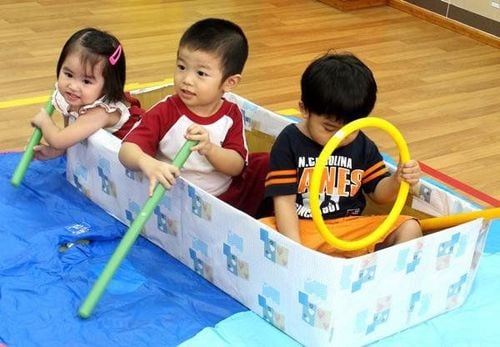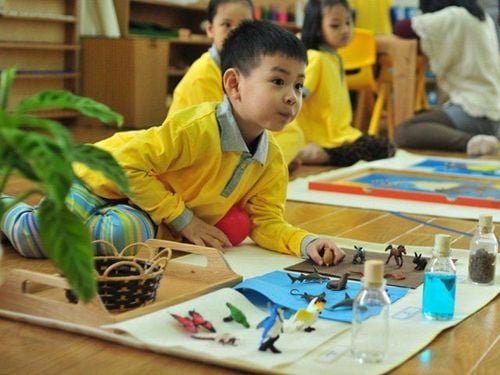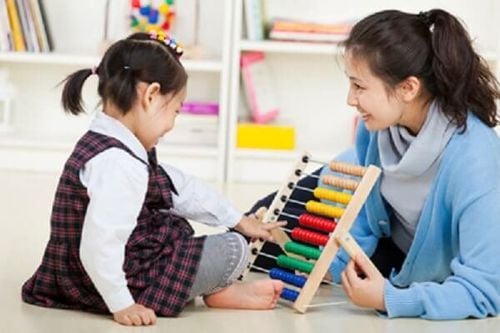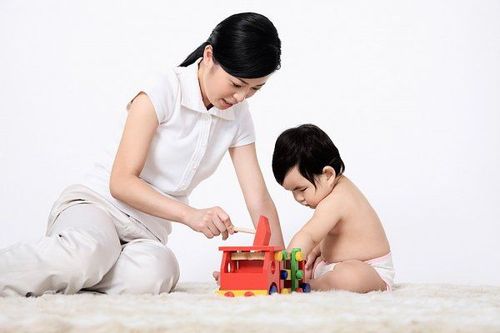This is an automatically translated article.
Article by Master Nguyen Thi Yen - Pediatric Speech Therapist - Vinmec Time City International Hospital
Many children love to play with toys that are means of transportation such as cars, trains, planes... With a toy car, you think, how much you and your child will play how many ways? And with this car, how many skills can your child learn?
1. Teach children skills through playing with them
For many parents, it is difficult to play with their children. The reason is not because they do not spend time playing with their children or do not follow them, but because:
Adults focus a lot on the “function” of the toy. For example: cars have to go on the road, cars have to carry animals, pens are used to write (not a microphone to sing),... Adults have to "remember" how they used to play to "direct" lead" back to the child. Or some adults don't know how to use a new toy because they have no experience with it. Some adults frequently recall previous unpleasant experiences when they were playing with their children and unknowingly the child "rejected" them. Adults think that playing is a "must" to learn something very specific, for example: learning to count, learn colors, etc. One of the more common reasons is that children often play in their own style without not playing. follow parental instructions, which makes it difficult for parents to maintain a play activity with their child. However, with children, they don't think so much. Play is simply play and play is fun. If parents understand this, the benefits of playing are not only that children learn numbers and colors, but they also learn life skills games, observation games, and games. Game forging skills to protect yourself or thinking skills, problem solving. However, these learning goals must be cleverly integrated into a fun play activity.
2. Some effective suggestions for parents to play with their children
2.1. Teach parts of the game You can hide parts of a set of games (e.g. cars, bridge pieces, signs,...) in different places and play the game with your child” treasure hunt” to find the missing pieces of the game. After each time you find an item, instruct your child to name the item. This helps children learn skills through games a lot.

Trò chơi kỹ năng sống với gợi ý dạy con nhận biết các phần của trò chơi
2.2. Provide Vocabulary Encourage your child to name the object he needs before you give it to him. If your child has a jigsaw puzzle, you can also teach her to name each part of the piece before putting them together. While your child is playing, you can model using simple comments that are suitable for your child's comprehension and expression, such as: "the car is moving slowly on the bridge", "you wait for your turn". okay”, “oh the cat fell, we need to call the car...”
2.3. Follow multi-step requests Depending on your child's age and ability, you can make requests that include one or more steps for your child to follow. This requires the child to be able to understand the request and remember it long enough to do it properly. For example:
For 1-2 year olds, make requests that include 1 ingredient. For example: “where is the car”, “please stop the car”, “let the car go up”, “show me the car”, “give me the ball”,... For children 2-3 age, you make requests that include 2-3 components. For example: “put the bear in the car and drive away”... For 3-4 year olds, make requests that include 3-4 ingredients. For example: “put the bear on the car, carry it on the bridge and then slide down”... 2.4. Step-by-step You use only one set of toys and encourage your child to take turns playing with you. In the early stages of teaching your child to take turns, give your child more turns, while you play your turn quickly. This helps your child understand the concept of “take turns”. Because many children, when they see adults playing, are afraid that adults will take their toys, so they are often not willing to share their toys. Once your child gets used to taking turns, you can lengthen your turn and eventually play balanced rotations together: child one turn – mother one turn.
2.5. Teaching numbers You can make a model to count the number of cars, the number of parts of the toy set, ... then, guide your child to count. At the first playthrough, you can just count to 3 and then have the child repeat. Do not expect your child to be able to count and answer the correct number of cars immediately, instead, make the game natural and fun so that your child will be motivated to continue the counting game. number with you. This is also a life skills game for preschoolers.
2.6. Teaching language You can encourage your child to use single words (for 1-year-olds), 2-3-word phrases (for 2-year-olds), simple sentences (for 3-year-olds) to express needs and his play ideas. If your child's words are not really clear and complete, please repeat them and model new sentences for them. For example, if your child says “I want a car”, you can say “I want a car”. In addition, pay attention to teaching your child to use a combination of words and gestures (smiling, nodding, shaking head) to communicate. In addition, you should also guide children in concepts such as: children's, mother's, sister's,...
2.7. Teaching concepts Teaching concepts is very important for children's development. Children will learn and use the concepts of colors, shapes, properties, ... to describe what they see or express their needs.
About colors: encourage children to sort groups of toys with the same color together. For example: group of red cars, group of blue cars,... About size/shape: You can make a comment about a toy (for example, this wheel is round, this track is curved,. ..). You can organize a “mystery object” game by having your child touch an object and describe its characteristics so that the parent can guess the name. The concept of “first, middle, last”: If your child plays with trains, you can introduce them to each car in turn. If your child plays with other toys, you can arrange the toys in a row and play "roll-in" to get in the car. Name actions: fast/slow, on/off, go/stop,... 2.8. Imaginative Play Skills You can add a few toys (eg dolls, animals) and guide your child to “imagining” the daily routines of the toys. For example: a car carrying a doll to school, a car going to the supermarket, a car carrying animals to swim,... For the first plays, choose toys related to the toys your child is playing. play and are toys children are also interested in. This will make it easier for children to accept the addition of a new toy with more complex play actions.
2.9. Problem-solving skills Based on imaginary play activities, you can “deliberately” create problem situations spontaneously and guide children to deal with them. For example: a car running out of gas, a doll playing while falling, two friends fighting over each other's toys,...

Kỹ năng giải quyết vấn đề với các trò chơi kỹ năng sống
2.10. With children who only like to play with a certain set of toys Children with autism are often babies who tend to "play with a toy" in a fixed and stereotyped way. With these children, you will need to use toys flexibly to both encourage children to interact with others, increase their motivation to play, and guide children to use language to express needs, my feeling. Sometimes, children will want to play with the same toy forever, you can apply some strategies such as:
Make clear rules of play. For example, your child only plays with the car for 10 minutes, then moves on to another activity. Use a toy your child likes as a reward to encourage and increase his motivation to play. Expand the game by adding new toys or enhancing its consequences. For example, instead of a car going up the bridge and then sliding down, the car can go through the tunnel, go up the bridge and then slide down,... You may need to plan your play activities in advance. myself and my child. Make sure that your teaching goals (language, attention, social interaction) are cleverly integrated in the game for children to participate in fun, voluntarily.
In fact, playing with children and teaching them life skills is not too difficult, but parents need to be persistent and understand the child's personality so that they can create excitement in their children playing and learning. daily.
Please dial HOTLINE for more information or register for an appointment HERE. Download MyVinmec app to make appointments faster and to manage your bookings easily.
Reference source: childdevelopment.com.au












